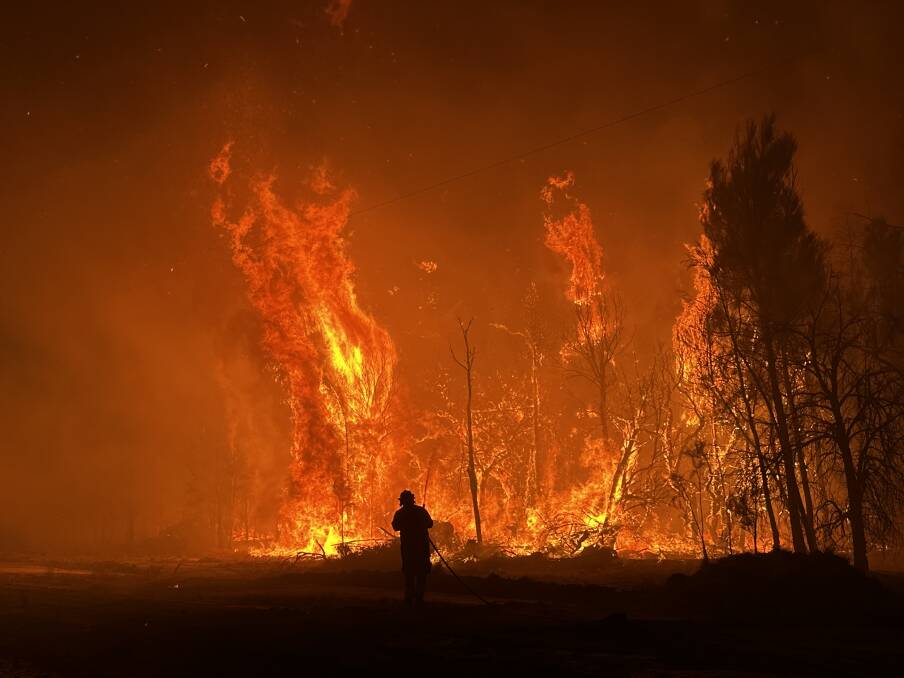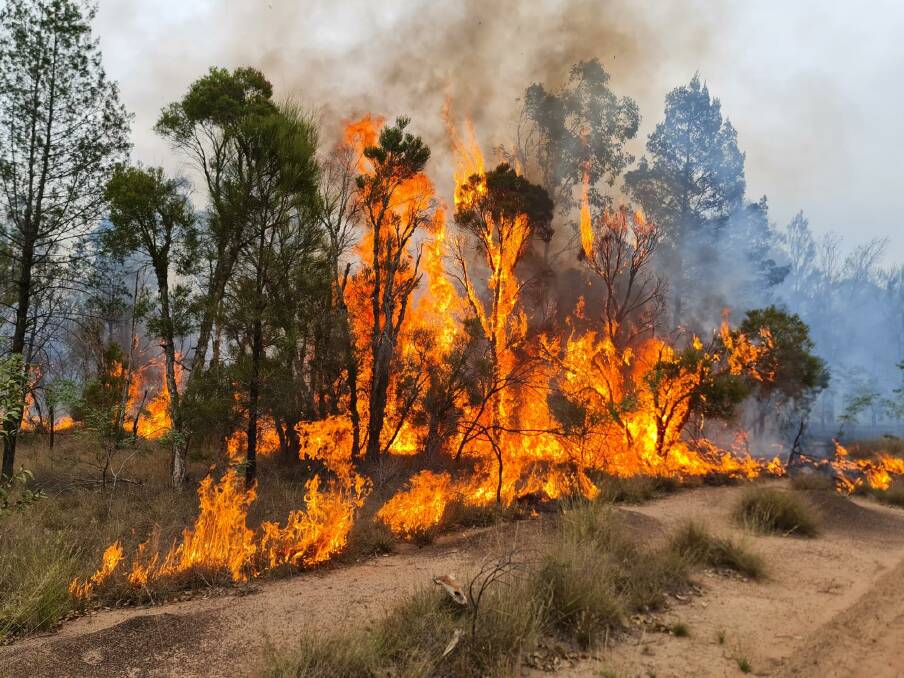Fuel for the fire: Why early preparation is key this year

This is branded content for Queensland Government.
Repeated flooding over the first half of 2022 resulted in significant fuel build-up across large areas of Queensland, and while this would always pose a threat at some point in the future, few could have predicted just how soon Queenslanders would see it burn.
A dry end to 2022 brought the focus of the bushfire season to the Western Downs, where multiple fires broke out from January to late March, destroying several homes, sheds, fences and farming equipment.
The recent bushfires spanned 54 days and burned more than 90,000 hectares, with 38 fires sustained for more than four hours, the longest running for 12 days.
The protracted firefight in areas including Myall Park, Montrose, Weir River, Wieambilla, and Fairyland required the deployment of dozens of crews from across Queensland to assist.
The operations also involved the deployment of multiple aircraft for water bombing and observation.
Part of the untold story of early 2023 is that there were many fires that, due to the rapid response of aircraft and ground crews, were extinguished in less than four hours.
Rural Fire Service Queensland South Western Regional Manager Superintendent Wayne Waltisbuhl said the late burst to the fire season was a sign of how quickly things can turn with high fuel loads that have had the time to dry out.
"Many parts of the region received good spring and summer rainfall which produced prolific grass growth late in 2022," he said.
"This occurred in many drought-affected timbered country as the canopies had opened, allowing the grass to grow. Many of our large fires occurred in these timbered areas.
"From late December 2022 we noticed the vegetation changing as there was no follow up rain and the temperatures climbed adding to the grasses drying out. The BOM made the prediction early in January that this weather pattern would continue through to the end of March. It was unusual for the fire season to extend well into March."
Early start to the 2023-24 bushfire season predicted
Despite the size and ferocity of what occurred early 2023, masses of potential fuel remains. Of particular concern for the RFS is the combination of those high fuel loads with the prospect of a warm, dry winter.
This could result in an earlier-than-normal start to the next fire season - something the RFS is already preparing itself and landholders for.
"RFS is predicting an early start to the 2023-24 fire season," Supt Waltisbuhl said.
"We are preparing for this to start in August with the main risk areas being grasslands in the Western Downs, Roma, St George, Cunnamulla, Charleville and Quilpie areas.
"Landowners need to start planning and preparing during winter months as there will only be a small window to carry out fuel reduction burns."
The RFS will be working alongside government and other organisations including Queensland Parks and Wildlife Service, local councils, Queensland Rail, HQ Plantations and Agforce to reduce the fuel load.
RFS South Western Region Bushfire Mitigation Manager Inspector Michael Welsh said the biggest concern was the amount of bushfire fuel in the landscape which a range of agencies would be working together to reduce this year.
"RFS provides assistance in planning and conducting hazard reduction burns, engaging with communities with bushfire education, and applying local knowledge in supporting agencies to construct strategic fire trails," Insp Welsh said.

Don't underestimate fire: Prepare now
As one of the volunteers at the forefront of the early 2023 bushfires in the South Western Region, Andrew Stewart can attest to why being prepared and aware of fire danger is so important.
The primary producer and member of Commoron Rural Fire Brigade, east of Goondiwindi, said two fires sparked by farmers using angle grinders demonstrated how quickly a small fire can get out of control.
"We had two fires near Goondiwindi, the second of which was a major fire," he said.
"At that time we had constant hot and dry winds. Fire conditions were aggressive while not totally unpredictable. It was raging by the time crews arrived.
"A large bulldozer burned in that fire and fencing was destroyed, and this was very avoidable.
"Landholders are responsible and need to think about their actions ahead of the fire season."
RFS Western Rivers Area Director Inspector Ross Stacey said with good preparation, landholders could reduce the potential for large-scale fires.
"Now is the time for landholders to prepare," Insp Stacey said.
"Access into the property and around the property is critical to help in containing fires quickly.
"Without access it makes quick suppression difficult and often this is what can cause fires to grow quickly and become uncontainable in marginal conditions.
"Landholders should reach out to their local fire warden for advice and discussion on what will be required for the permit to light fire, including the width and condition of breaks, and type of equipment required to contain fire.
"Early contact with neighbours is also recommended to keep them in the loop of your intention to apply for a permit, this may prove beneficial in doing a joint burn."
Have firefighting equipment ready
For landholders, having the ability to stop a small fire before it gets out of control is just as important as any mitigation measure.
Anyone conducting farming operations with the potential to spark a fire, such as slashing, welding or grinding, should have firefighting equipment on hand.
"If the landholder is doing hot works like grinding and welding, ensure firefighting equipment is at hand to extinguish a fire when it starts," Insp Welsh said.
"The equipment can be a firefighting pump and hoses with a water tank on a trailer or ute. A fire extinguisher is very handy too. Landholders should consider joining their local rural brigade with the advantages of working in a team to control fires.
"The local brigade also has firefighting equipment like slip on firefighting units assigned to help the brigade control fires."


